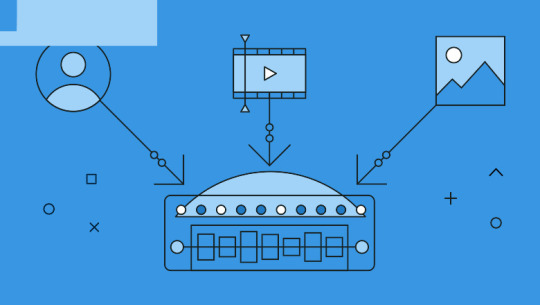#bypassFacebookalgorithmworks
Text
How the Facebook algorithm works and ways your brand can outsmart it

How the Facebook algorithm works bypass
Is the Facebook algorithm leaving you confused and frustrated?
You’re not alone. With the algorithm constantly going through updates, brands have a lot of anxiety about how these changes impact their organic reach.
And marketers on Facebook have a right to be concerned, considering Facebook remains the most popular social media platform for consumers and brands. According to the 2022 Sprout Social Index, 71% of consumers and 65% of marketers plan on using Facebook the most over the next 12 months.
Fortunately, beating the Facebook algorithm could be as simple as understanding how it works. That’s exactly what we aim to address in this guide. Let’s find out how the Facebook algorithm works and how you can use it to boost your Facebook marketing strategy.
What is the Facebook algorithm
The Facebook algorithm is a set of rules that decides what posts people see in their Feeds. Essentially, it decides which content is most relevant to show to each user based on several factors. Each user’s Feed will look very different since it’s personalized just for them.
The Facebook algorithm has gone through many updates and improvements over the years. One of the most recent updates focused on assessing the credibility of news articles. The goal of this update was to curb misinformation by promoting reliable and high-quality news sources.
How the Facebook algorithm works
While the earliest algorithm prioritized posts that got the most Likes, the algorithm we see today is a lot more sophisticated. Specifically, it considers four factors to decide which posts to show to which user.
1. Inventory
First, Facebook takes inventory of all the content that could show up on your Feed. This includes posts coming from people you’re friends with. It also includes content from the Pages you follow and the groups you’ve joined.
2. Signals
The algorithm then assesses the relevance of each piece of content based on thousands of signals. This includes signals such as who posted it and how often you interact with them. It also looks at when they published the post and what time it is for you.
Facebook also considers signals such as the type of content and how you’ve interacted with similar posts. In other words, it tries to assess relevance by understanding the nature of the content and your behavior.
3. Predictions
Next, it uses the signals above to make predictions about what you want to see. The algorithm will analyze past behavior to try and understand how likely you are to engage with a piece of content.
Let’s say you regularly interact with a certain friend’s post. The Facebook algorithm will take that as a sign that you like seeing content coming from that friend.
Similarly, let’s say you regularly watch and engage with videos from a Page about eco-friendly living. It will understand that you like to watch videos from that Page and you’re interested in this topic.
4. Relevancy scoring
Finally, the algorithm will score each content depending on how relevant it is to you. The higher the score is, the more likely it is to show up in your Feed.
Facebook algorithm update timeline
Fast forward to the present day and the Facebook algorithm is still evolving. Below is a quick snapshot of some of the changes Facebook has made recently.
March 2019 – “Why am I seeing this post?” update
Facebook started giving context to why users are seeing certain organic posts and Facebook ads. Users could now see a list of reasons why they fit the target audience for a certain Facebook ad. So brands needed to fine-tune their audience targeting to reach the most relevant users.
Read the full article
#bypassFacebookalgorithmworks#facebookalgorithm#Facebookalgorithmworks#Facebookaudienceinsights#facebookbusinesspage#HowtheFacebookalgorithmworksbypass
0 notes